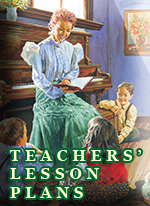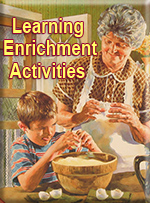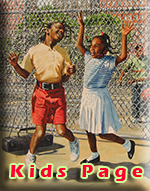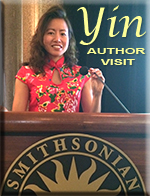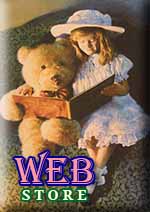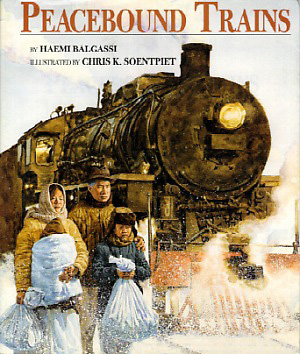|
Author: Haemi
Balgassi Clarion Books imprint of:
|
||||
 Yin and I at the Society of Illustrator's Original Art Show receiving the Gold Medal for PEACEBOUND TRAINS. |
|||||
and featured it, complete with a Teacher Activity Guide, on the United States of America Korean War Commemoration site. Peacebound Trains is the only book to receive this honor. |
|||||
|
|||||
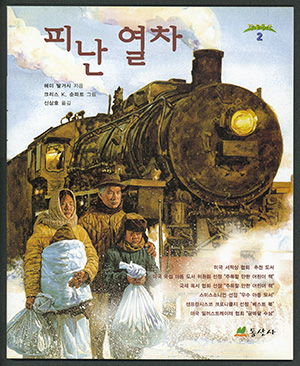 |
AVAILABLE IN KOREAN For copies in Korean, contact: DongSanSa Publishing Company ISBN # 89-954622-5-6 www.dongsansa.co.kr or order copies from this site http://www.aladdin.co.kr/shop/wproduct.aspx?ISBN=8995462256 |
|
Background: On June 25, 1950 communist troops from North Korea crossed the 38th parallel and invaded South Korea. The 38th parallel was assigned as the demarcation point between North and South Korea at the end of World War II. Troops form 22 countries came together under the banner of the newly created United Nations to fight the communist forces from North Korea, China and the Soviet Union. Many families in South Korea, like the family in the book, were forced to flee to safer places. The fighting between North and South Korea continued until July 27, 1953 when a cease-fire was negotiated but an armistice was never signed. Today, North and South Korea remain divided at the 38th parallel. North Korea is still a communist country and South Korea is a democratic country. American troops still remain in South Korea. Pre-reading: Show the students the cover of the book, read the title, author and illustrators name. Ask them what they think the book will be about. Next show the illustration of the modern train -- now what do they think the book will be about. Ask if anyone has ever taken a train ride. Where did they go? Did the train look more like the one on the cover or the one inside the book? Was the train crowded? Where did they ride? Set the location of the book -- tell the students the book has a story within a story. Explain that the grandmother will tell a story that happened many years ago. Have the students look at a globe or world map to locate Korea and the United States. Reading: As you read and show the illustrations have the students look closely at the drawings. What details can they find in the pictures? Have them look closely at the expressions on the faces for the characters -- how do they change during the story. Ask the students how they think the characters are feeling. Can they tell by the illustrations? Don't forget to ask how they think Sumi's mother is feeling -- even though there are no illustrations of her mother the students can guess. Have a map near by to see how far it is from Seoul to Pusan. Post-reading: Have the students plan a train trip. The students can do this in small groups or altogether. Suggestion -- plan a modern day trip from Seoul to Pusan and then compare and contrast that trip with the trip in the book. Did they like the ending of the book -- rewrite the ending. Colors: The author uses vivid descriptions of the character's eyes. Have students find these in the text and then see if they can write some of their own to describe a classmate's eyes or another item. Example: milk-chocolate eyes; chestnut-brown eyes etc. Interview: Talk with a Korean War Veteran -- then write their story. Talk with a grandparent, or another relative or friend who has moved -- write their story. Geography: Have the students plan a trip across the United States, Canada, Europe, Australia, etc. Ask them to estimate the miles, how long will it take, what will they need to bring -- food, clothes, entertainment items, books etc. What do the think they will see along the way -- will the see rivers, mountains, lakes, deserts, plains, farms, factories, cities etc. Locate Korea on a world map. Tell the students that many countries sent troops to fight in the Korean War. Have the students locate the countries on the map. How many continents are represented -- list the continents and place the participating countries under the correct continent. Which continent is not represented? Science: Plan meals for the proposed train trip -- use the food pyramid remember snacks and any special foods family members might require. Farms and farming -- where does our food come from? What is a rice paddy? Try growing plants in a variety of ways -- soil, hydroponics etc. keep a journal of their growth. In the story the family had to cross a river with heavy currents. Explore currents and how rivers flow. Do lakes have currents, what other bodies of water have currents? Social Studies: Spend more time studying the Korean War. Cobblestone magazine has a special edition devoted to the Korean War. Talk about immigration -- are there any immigrants in the class -- list the countries the students ancestors came from are any of them a country that fought in the Korean War? Make a guidebook to Korea -- cover topics like cities, geographical features, customs, traditions, folklore, early history, food, games, traditional dress. Literature: Read another book about Korea and the Korean War, DEAR JUNO by Soyung Pak, THE NAME JAR by Yangsook Choi. Look for other books by Haemi Balgassi or Chris Soentpiet. If you really enjoyed PEACEBOUND TRAINS write a review and post it on-line at Amazon.com or Barnesandnoble.com so others can enjoy your reading experience. Art: Make a yarn and paper rag doll. Make a life-size paper doll. Have students pick partners. Then have the students take turns making tracings of each other on brown wrapping paper. Now have the students cut out the tracings and decorate the paper dolls with scraps of paper, fabric, yarn, and other craft items -- don't forget magazine pictures. Make paper dolls to represent the characters in the story or children and adults in traditional Korean dress. Graphic Organizers and bulletin board pattern: Train graphic organizer -- use the modern and old style train cars to list the events of each story. Example: Use the modern engine for the first event in the story about Sumi or use the old style caboose for the last event in the grandmother's story. Use the boxcars to list the events of the story. Post the trains around the room. Bulletin Board -- use the "sack" to have each student list what they would pack if the had to leave home suddenly -- remember they will have to carry the "sack" so no televisions please! |
